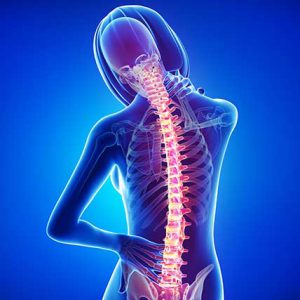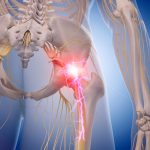 Why do Structural Problems Require Structural Solutions?
Why do Structural Problems Require Structural Solutions?
Medicating neck and back conditions only masks the pain and other symptoms. The root cause should be identified and addressed rather than only managing the pain. Otherwise the underlying condition will most likely persist, and neck or back pain will resurface sooner or later.
A research study in JMPT indicated that only 9% of those who experienced back pain for more than 30 days were pain free five years later.
Why are so many individuals still experiencing back pain five years later?
Often times, an “insult” can be identified, such as moving heavy objects, a sports-related collision clomid 100mg or mishap in the gym, a work-related incident or car accident. In instances where there is trauma with accompanying back or neck pain and restriction, its advisable to determine if there are any “structural problems” such as concurrent skeletal or joint misalignment. Correction of structural misalignments with non-invasive treatment is often necessary to bring about a complete recovery and minimize susceptibility to future episodes.
Back and neck pain can also be triggered by non-strenuous, routine daily activities. Patients often insist they did nothing to injure themselves. They are perplexed and unable to identify the specific event or trauma that brought on a current episode of pain.
Seemingly harmless, ordinary actions like sitting at a computer, carrying groceries, bending to attend a child, or exercise activities, like running or biking can elicit an episode of neck or back pain. Why is it that a robust individual should experience severe pain from an action as innocent as a sneeze?
Often an old injury — with a structural component that went unaddressed — had healed incorrectly and left the patient susceptible to this latest insult causing neck or back pain. Structures become vulnerable as the result of an old injury that has healed with misalignment and scar tissue. The surrounding musculature often will tightly “lock down” sensitive structures, protecting the area in attempt to avoid pain and reduce vulnerability. Muscle tension is a common phenomenon patients notice; tension and spasm can exist for years as the body’s attempt to lock-up, stabilize and protect a scarred damaged joint.
Why do some sufferer’s neck or back pain resolve with rest, while the majority do not?
With rest and caution, sometimes the pain will “go away.” In these cases, the damaged tissue most likely healed without
restrictive scar tissue, and/or there was no misalignment or serious pathology. Therefore, they are less susceptible to non-strenuous activities causing future bouts of neck or back pain.
Unfortunately in the above study, 91% of the participants did not have a favorable outcome and continued to suffer with back pain.
This is why it is important to determine if there is an underlying skeletal compensation compromising joint mechanics, leaving the person’s skeletal structures susceptible to injury from seemingly innocent activities, causing recurring neck/back pain. Most neck or back pain is caused by structural conditions, not serious pathology or disease.
Accurate diagnosis is essential to resolving neck or back pain in the long term.
The chiropractor will conduct a comprehensive consultation with the patient to identify the details associated with the current complaint of neck or back pain. A thorough examination of the injured skeletal area will be performed by the doctor. This includes inspection the entire region and kinetic chain for structural misalignment and biomechanical problems, such as scar tissue and arthritis. With a postural evaluation we can determine where the joint function and skeletal relationships are compromised, potentially causing neck or back pain. We rule out serious pathology and establish any influence from previous injuries such as falls, repetitive traumas, sports or motor vehicle accidents, etc.
Structural exam involves visual inspection of posture and alignment. It is often obvious to even an untrained eye to see one shoulder or hip higher than the other. We check for muscle spasm and determine range of motion limitations. When there are significant findings it may be necessary to perform an X-ray or MRI to determine if there is damage, misalignment, disc herniation, arthritis, and rule out serious pathology or disease.
Treat the CAUSE of neck or back pain. Don’t only mask the symptoms.
Once we identify the structural problems, we address pain management with gentle and natural modalities like cold laser, e-stim, ultrasound, massage therapy, electroacupuncture and when necessary dietary supplements like turmeric and boswellia. We then gently realign the skeletal structures manually or with our decompression apparatus. We design an individualized dynamic stabilization exercise program to enhance and maintain the
structural correction.
Our goal is to offer swift pain relief…but more importantly, effect a structural correction that will provide a long term structural solution, thus preventing future neck or back pain and disability.
